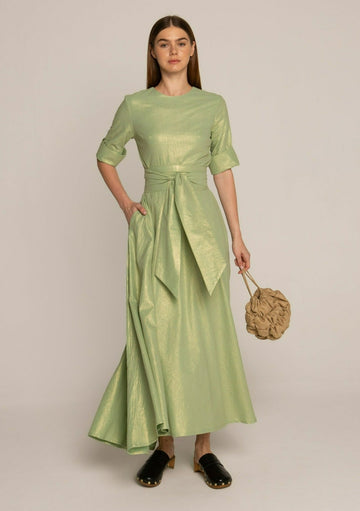5 Sewing Tips for Custom-Made Dresses

When you make your dress, you can express your creativity in a way you can't do with ready-to-wear clothing. To create a unique design, pick the style, a fabric that inspires you, and the fit.
Additionally, your favourites are designer dresses that fit nicely and make you proud of your sewing skills. So, the next time you choose a pattern, keep these dressmaking skills in mind. Before long, you'll have a flawless design from top to bottom.
Tailors create designer dresses specifically for a specific person and call them custom-made. The demand for such made-to-measure apparel is rising along with various fashion trends.
- Fitting
The bust, waist, and hip measurements are the three most important to determine your size. To gain a general sense of what size you should choose, all commercial designs will instruct you to start with those measurements. Naturally, your project will guide you in determining what other measurements you should pay attention to and which ones you may ignore.
- Making a Muslin
The value of creating a muslin cannot be emphasised enough. After taking your measurements, you can test the size you chose by making a practice version in muslin fabric. This helps reduce the possibility of making a cutting error in your fashion fabric, reduces the learning curve for a new sewing pattern and identifies any fit problems that may already exist.
You'll have no trouble getting through your final version once the muslin has been tailored to take on its last appearance.
- Structuring and Finishing
Your dress' interior is just as significant as its exterior and demands the same level of care. Therefore, it's crucial to understand how to decrease bulk, grade seams, and clip curves when your pattern specifies. It's also worthwhile to take the time to hand-sew a hem or neckline if it is suggested, as this will give you a lovely, tidy finish.
- Interfacing
Knowing how to use this material effectively is essential since it gives a dress more structure, support, and shape. (You should also be aware of the type to use; sew-in and fusible alternatives are available.)
Pro tip: Your pattern instructions will specify which sections need to be interfaced, and whatever kind you choose should be comparable in weight to the fabric you'll be using for your clothing.
- Pressing
Never undervalue the strength of an adequately pressed seam! Along with a few other pieces of equipment, the ironing board is your buddy, and taking the time to press it properly will significantly improve the appearance of your finished dress. Additionally, pressing is distinct from ironing in that you shouldn't move your iron back and forth during pressing because doing so will stretch the fabric.
- Establish Your Comfort Standards:

If you frequently wear your favourite clothing for comfort reasons, take the time to define what comfort means to you. Justify your choice of attire honestly. For instance, what body types feel comfortable wearing? What types of textiles feel comfortable when you wear them? What kind of details enables something to be wearable for you?
You might, for instance, like clothing that cinches at the waist or items with some elastic. Finding those circumstances, whatever they may be for you, will enable you to create infinitely more wearable items.
- Enhance Your Creations with Something Extra:
The final advice is to consider several basic, straightforward shirt dresses for women that might fit your criteria and give each one a unique feature. How can you make them just a little more special so that you have something you can wear while also making them feel unique?
Make some outerwear, for instance, with fine details. Alternately, choose a fascinating fabric for a stunning top or blouse that you may match with your preferred pair of jeans. To create clothing, you love to wear, strike a balance between what you know and trust and what feels special.
- Describe Your Regular Activities:
What activities do you picture yourself undertaking in this particular garment, similar to setting contexts for your clothing? We have a task in Design Your Wardrobe where you define certain circumstances for your attire. Making a list of your regular activities can be helpful.
What, for instance, will you do all day if this is an item of clothes you wear daily? This could be taking care of your children or engaging in outdoor activities like gardening. You could have to host events or spend the entire day seated at a desk. Aside from weekends, consider weekdays.
Endnote
Make sure it suits your body before you put in all that effort at the sewing machine to avoid wasting your time and money. Do you have any other sewing advice to make your shirt dresses for women appear custom-made? If so, do share them with us at Baruni online right now.
